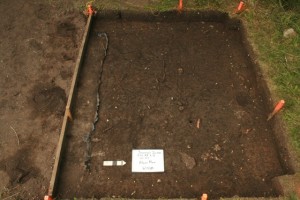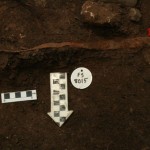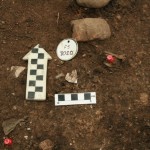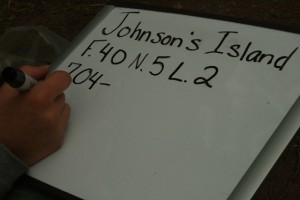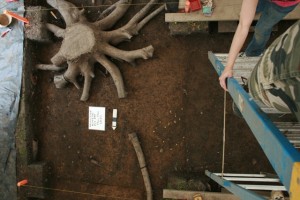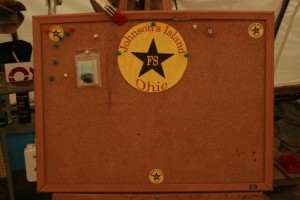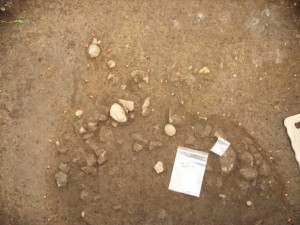Our excitement this week has been narrowly focused on feature 40, the latrine. Although we do find important items in the hospital block, in feature 40 we are presented with a unique opportunity. We know the exact dates that this latrine was in use, affording us a snapshot in time of the everyday life of the common prisoner. What we find in the hospital block is debris that has fallen through floorboards and a few features, mostly expressed as disturbances in the subsoil. We are currently excavating one such feature under Block 6 that may be Native American in origin. We do find interesting artifacts, such as ceramics, plate glass, and smoking paraphernalia. Yet the pieces we find here are fragments of an incomplete whole. It is in the latrine that we have the chance to find items intact enough to be refitted and displayed. How exciting!
Think of the latrine. An open pit that no one would dare enter. Something might slip from a pocket and fall into the murky depths accidentally. A soldier in a thin coat in the middle of an Ohio winter might not even feel something slip from his hand. Anything lost here would not be recovered. In the hospital block, lost items may be noticed. When valued belongings went missing, a search was conducted until the object was again found. What falls into the latrine stays in the latrine.
The latrine feature allows us the opportunity of a concentrated source of cultural materials. A place where we may find anything that a prisoner might carry in his daily life. We may have the good fortune to find what the soldier might lose.
The field school is divided into three groups, and we rotate to provide an equal opportunity to experience the excavations of the latrine. Every day, we excavate a few more centimeters revealing more and more at each level. One crew works in the latrine during the morning, one crew works it during the afternoon, and anyone not scraping away in this location works the open units of the hospital compound.
We document every artifact we find, marking every protrusion with a push pin; as a reminder to take care and investigate further. The field specimens we catalogue separately, making careful note to document the provenience, or specific place and level associated with discovery. We take pains to photograph everything, because we cannot go back to reexamine the site. As we continue excavating, we take apart the previous levels. Without proper documentation, everything we do would be lost.
In archaeology, we are only able to recover a sample of what is present. Excavating the entire site would be destructive, as well as impractical. The sample is best represented through our thorough documentation.
It’s in the field specimens, those incredibly telling artifacts of particular usefulness and uniqueness, that we find the most excitement. And the latrine promises countless specimens for this year’s team.

